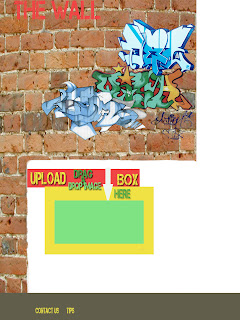Group II – Digital ThrowUp!
The initial idea for Group II was to create a story that would then be experienced through a series of events that would lead to a destination. The use of Quick Time VR would have been utilized for the exploration of various environments to navigate through a “branching tree structure” maze. When reading “Interactive Storytelling” by Chris Crawford, he describes the branching tree structure as a story that is given multiple choices and decisions after an event has occurred. After choosing one option you are given more options to choose from and so-on and so-on. The initial idea seemed to be an interesting one at first, because it was being viewed from the “designer’s point of view”. Crawford gives an example of a story going through 10 phases. “From the designer’s point of view, these 10 steps represent a heavy workload. From the player’s point of view, however, all this work yields a story that’s just 10 steps long.”
This concept of the branching tree structure was discovered as an unsuccessful tool for interactive storytelling and was discarded by Group II. Crawford goes on to say that “In interactive storytelling, plot is replaced with a web of possibilities that communicate the same message.” The revised approach for the interactive storytelling project is to let the audience create an art piece that is the combination of individual works of art and express them as a whole. To achieve this concept, a blank canvas is used like a graffiti wall for users to apply layer after layer of work. Crawford also states, “To understand the abstractions…, you must first let go the notion of plot.” The wall becomes an abstraction of individuals and their creative works, thus enabling a network of people to join a common interest that can be discussed and interpreted endlessly. The wall is ever-changing and constantly evolving.
The title of the project is “Digital ThrowUP!” The word ThrowUP comes from terminology that is used in the graffiti world that refers to a type of graffiti style. There will be a mix array of digital media and an unpredictability of content that will populate the wall. For maximum potential of user interaction, the wall is separated into five categories. This broadens the spectrum of personal interests and personalities. The categories are:
• Photoshopped ThrowUp (Photoshopped images)
• Photo ThrowUp (photographs)
• Graffiti ThrowUp
• Paint ThrowUp (MS Paint)
• Sketch ThrowUp (scanned sketches)
A blog will be created that coincides with each wall of art for people to explain their work and comment on others.
This concept of the branching tree structure was discovered as an unsuccessful tool for interactive storytelling and was discarded by Group II. Crawford goes on to say that “In interactive storytelling, plot is replaced with a web of possibilities that communicate the same message.” The revised approach for the interactive storytelling project is to let the audience create an art piece that is the combination of individual works of art and express them as a whole. To achieve this concept, a blank canvas is used like a graffiti wall for users to apply layer after layer of work. Crawford also states, “To understand the abstractions…, you must first let go the notion of plot.” The wall becomes an abstraction of individuals and their creative works, thus enabling a network of people to join a common interest that can be discussed and interpreted endlessly. The wall is ever-changing and constantly evolving.
The title of the project is “Digital ThrowUP!” The word ThrowUP comes from terminology that is used in the graffiti world that refers to a type of graffiti style. There will be a mix array of digital media and an unpredictability of content that will populate the wall. For maximum potential of user interaction, the wall is separated into five categories. This broadens the spectrum of personal interests and personalities. The categories are:
• Photoshopped ThrowUp (Photoshopped images)
• Photo ThrowUp (photographs)
• Graffiti ThrowUp
• Paint ThrowUp (MS Paint)
• Sketch ThrowUp (scanned sketches)
A blog will be created that coincides with each wall of art for people to explain their work and comment on others.

Comments